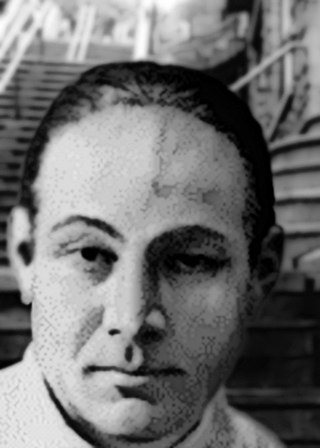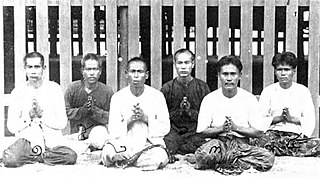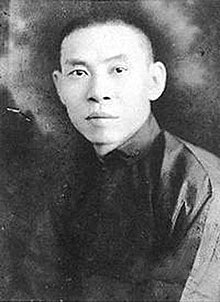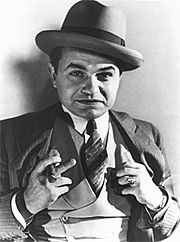
Organized crime or organised crime is a category of transnational, national, or local group of centralized enterprises run to engage in illegal activity, most commonly for profit. While organized crime is generally thought of as a form of illegal business, some criminal organizations, such as terrorist groups, rebel forces, and separatists, are politically motivated. Many criminal organizations rely on fear or terror to achieve their goals or aims as well as to maintain control within the organization and may adopt tactics commonly used by authoritarian regimes to maintain power. Some forms of organized crime simply exist to cater towards demand of illegal goods in a state or to facilitate trade of goods and services that may have been banned by a state. Sometimes, criminal organizations force people to do business with them, such as when a gang extorts protection money from shopkeepers. Street gangs may often be deemed organized crime groups or, under stricter definitions of organized crime, may become disciplined enough to be considered organized. A criminal organization can also be referred to as an outfit, a gang, crime family, mafia, mob, (crime) ring, or syndicate; the network, subculture, and community of criminals involved in organized crime may be referred to as the underworld or gangland. Sociologists sometimes specifically distinguish a "mafia" as a type of organized crime group that specializes in the supply of extra-legal protection and quasi-law enforcement. Academic studies of the original "Mafia", the Italian Mafia generated an economic study of organized crime groups and exerted great influence on studies of the Russian mafia, the Chinese triads, the Hong Kong triads, and the Japanese yakuza.
A gang is a group or society of associates, friends, or members of a family with a defined leadership and internal organization that identifies with or claims control over territory in a community and engages, either individually or collectively, in illegal, and possibly violent, behavior, with such behavior often constituting a form of organized crime.

Salvatore Maranzano, nicknamed Little Caesar, was an Italian-American mobster from the town of Castellammare del Golfo, Sicily, and an early Cosa Nostra boss who led what later would become the Bonanno crime family in New York City. He instigated the Castellammarese War in 1930 to seize control of the American Mafia, winning the war after the murder of rival faction head Joe Masseria in April 1931. He then briefly became the Mafia's capo di tutti capi and formed the Five Families in New York City, but was murdered on September 10, 1931, on the orders of Charles "Lucky" Luciano, who established The Commission, in which families shared power to prevent future turf wars.
A drug cartel is a criminal organization composed of independent drug lords who collude with each other in order to improve their profits and dominate the illegal drug trade. Drug cartels form with the purpose of controlling the supply of the illegal drug trade and maintaining prices at a high level. The formations of drug cartels are common in Latin American countries. Rivalries between multiple drug cartels cause them to wage turf wars against each other.
The United Bamboo Gang, also known as the Bamboo Union, is the largest of Taiwan's three main criminal Triads. They are reported to have roughly 20,000 members. The membership consists largely of waishengren and has had historic ties to the Kuomintang; they are said to be motivated as much by political ideology as by profit. They are known to simply call themselves "businessmen", but in reality, are also involved in organized killings and drug trafficking. The gang gained global notoriety when it became directly involved in politics in the early 1980s.
The Irish Mob is a usually crime family–based ethnic collective of organized crime syndicates composed of primarily ethnic Irish members which operate primarily in Ireland, the United States, the United Kingdom, Canada and Australia, and have been in existence since the early 19th century. Originating in Irish-American street gangs – famously first depicted in Herbert Asbury's 1927 book, The Gangs of New York – the Irish Mob has appeared in most major U.S. and Canadian cities, especially in the Northeast and the urban industrial Midwest, including Boston, New York City, Philadelphia, Pittsburgh, Baltimore, Cleveland, and Chicago.
The West End Gang is a Canadian organized crime group in Montreal, Quebec. An Irish mob group originating from the Irish-Canadian ethnic enclave of Pointe-Saint-Charles in the 1950s, the majority of the gang's earnings were initially derived from truck hijackings, home invasions, kidnapping, protection rackets, extortion, and armed robbery, with its criminal activities focused on, but not restricted to, the west side of Montreal. The West End Gang came to prominence via a series of high-profile bank robberies between the 1950s and the 1970s, a period when Montreal was known as "Bank Robbery capital of North America". Due to the gang's control of illegal activity at the Port of Montreal, it moved into drug trafficking and became one of the most influential criminal organizations in Canada.
A Mustache Pete is a member of the Sicilian Mafia who came to the United States as an adult in the early 20th century.
Serbian organized crime or Serbian mafia are various criminal organizations based in Serbia or composed of ethnic Serbs in the former Yugoslavia and Serbian diaspora. The organizations are primarily involved in smuggling, arms trafficking, drug trafficking, human trafficking, assassinations, heists, assault, protection rackets, murder, money laundering and illegal gambling. The mafia is composed of several major organized groups, which in turn have wider networks throughout Europe and across the world.
A crime family is a unit of an organized crime syndicate, particularly in Italian organized crime and especially in the Sicilian Mafia and Italian-American Mafia, often operating within a specific geographic territory or a specific set of activities. In its strictest sense, a family is a criminal gang, operating either on a unitary basis or as an organized collection of smaller gangs. In turn, a family can be a sole "enterprise" or part of a larger syndicate or cartel. Despite the name, most crime families are generally not based on or formed around actual familial connections, although they do tend to be ethnically-based, and many members may in fact be related to one another.
In the late 19th and early 20th centuries, African American organized crime emerged following the first and second large-scale migration of African Americans from the Southern United States to major cities of the Northeast, Midwest, and later the West Coast. In many of these newly established communities and neighborhoods, criminal activities such as illegal gambling, speakeasies and were seen in the post-World War I and Prohibition eras. Although the majority of these businesses in African American neighborhoods were operated by African Americans, it is often unclear the extent to which these operations were run independently of the larger criminal organizations of the time.
Albanian mafia or Albanian organized crime are the general terms used for criminal organizations based in Albania or composed of ethnic Albanians. Albanian organized crime is active in Europe, North America, South America, and various other parts of the world including the Middle East and Asia. The Albanian Mafia participates in a diverse range of criminal enterprises including trafficking in drugs, arms, and humans. Thanks to their close ties with the 'Ndrangheta of Calabria, they control a large part of the billion dollar wholesale cocaine market in Europe and appear to be the primary distributors of cocaine in various European drug hubs including London. Albanian organized crime is characterized by diversified criminal enterprises which, in their complexity, demonstrate a very high criminal capacity. In Albania, there are over 15 mafia families that control organized crime. According to some sources, Albania is the first European narco state.
Gangs in Canada are mostly present in the major urban areas of Canada, although their activities are not confined to large cities.
The American Mafia, commonly referred to in North America as the Italian-American Mafia, the Mafia, or the Mob, is a highly organized Italian American crime related society and organized crime related group.
Organized crime in Pakistan refers to the activities of groups of organized crime in Pakistan, The Pakistani mafia is spread in many countries. Pakistani mafia groups are mostly ethnically based. The Pakistani mafia is involved in drug trafficking, assassination, land grabbing, arms smuggling and various other illegal activities.
Organized crime in the Netherlands, sometimes called penose is the organised criminal underbelly in Amsterdam and other major cities. Penose usually means the organizations formed by criminals of Dutch descent. It is a slang word coming from the old Amsterdam Bargoens language.

A triad is a Chinese transnational organized crime syndicate based in Greater China with outposts in various countries having significant overseas Chinese populations.
Turkish mafia is the general term for criminal organizations based in Turkey and/or composed of (former) Turkish citizens. Crime groups with origins in Turkey are active throughout Western Europe and less so in the Middle East. Turkish criminal groups participate in a wide range of criminal activities, internationally the most important being drug trafficking, especially heroin. In the trafficking of heroin they cooperate with Bulgarian mafia groups who transport the heroin further to countries such as Italy. Recently however, Turkish mafia groups have also stepped up in the cocaine trafficking world by directly participating in the massive cocaine smuggling pipeline that runs transnationally from South America to Europe. They allegedly have a lucrative partnership with the Venezuelan drug-trafficking organization known as the Cartel of the Suns who ships them cocaine along with criminal elements from Ecuador. Turkish organized crime has pushed into less traditional cocaine markets as well such as into Eastern Europe, the Caucasus, and the wealthy petro-states of the Persian Gulf. Cosa Nostra and the Turkish mafia are also known to be extremely close. Criminal activities such as the trafficking of other types of drugs, illegal gambling, human trafficking, prostitution or extortion are committed in Turkey itself as well as European countries with a sizeable Turkish community such as Germany, Netherlands, Belgium, Albania, and the United Kingdom.
British firms are organised crime groups originating in the United Kingdom.








